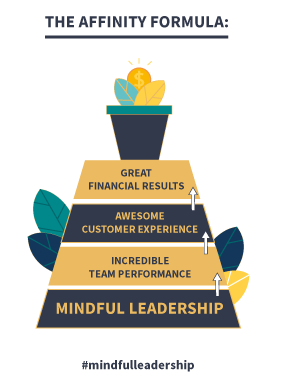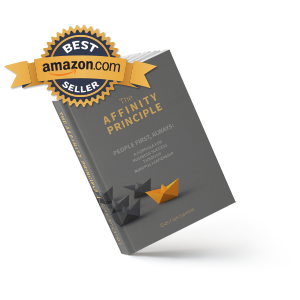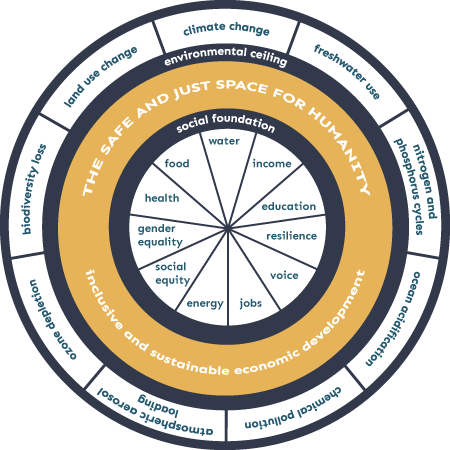What Does a Healthy Community Look Like Beyond COVID?


Grant Ian Gamble is an international business strategy and growth consultant, best-selling mindful leadership author and speaker. He works in a broad array of industries helping companies build teams, navigate change and drive growth. He has over 35 years of experience in the health and wellness sectors.
When we explore the power of community, nothing brings it into focus more clearly and powerfully than the varied responses to the COVID crisis. Through this lens, the dichotomy of our present reality also comes into stark relief.
As COVID descended squarely on the shoulders of humanity, partisanship and commercial interests were squarely at odds with the need for communities to work in harmony and solidarity to stave off escalating infection and spiraling death rates.
It seemed that where partisanship and conflicting interests generated fractured approaches from within communities, COVID flourished.
One antithetical extreme is the kingdom of Bhutan, a tiny landlocked country in the Himalayas bordered by China and India. Bhutan has only reported one death from COVID and an infection rate of less than 0.01% (compared to over 9% of the population in the U.S.).
In Bhutan, the guiding measurement of the country’s success is “Gross National Happiness”. This metric values economic development backed by environmental conservation and cultural values.
Has this guiding principle contributed to Bhutan’s unparalleled success in countering COVID? I think it’s likely, but I’ll let the scientists, epidemiologists, statisticians and actuaries argue the merit of that conclusion.

What is known is that like the “Donut Economic Model” embraced by Amsterdam to balance its approach to community wellbeing, Bhutan looks to its communities’ wellbeing as a foundation stone.
Bhutan and Amsterdam are not isolated examples of community wellbeing underwriting a societal philosophy. In fact, the whole Scandanavian peninsula has long been recognized as a maven for valuing community wellbeing.
In a Greater Good interview, economist Baron Richard Layard, of the London School of Economics, reflected on the high marks the Scandanavian countries uniformly scored every year in the World Happiness Report:
“You don’t have to turn your back on economics, but it’s not the be-all end-all. Human relationships are extremely important and need to be given a great deal of attention—we shouldn’t sacrifice them in the name of economic efficiency.”
Regardless of its causal effect on COVID, Bhutan’s goal of “Gross National Happiness” and the Scandinavian commitment to community wellbeing are admirable.
They certainly inspired me to think beyond some of the constructs I’ve created for myself in my 35-year career in wellness.
My work in the wellness arena began in the heyday of the fitness industry where flop socks and lycra was all the rage. Over time, my enthusiasm for fitness morphed into a deep appreciation for the more holistic benefits of wellness.
As I explored the boundaries of wellness, I had the opportunity to create large integrated wellness campuses with the goal of blurring the lines between healthcare and wellness.
These centers were focused on attracting the “Interested Deconditioned” segment of the market to movement, and building community from within their shared experience. The “Interested Deconditioned” segment represents almost two thirds of the population who know they need to move more to be healthy, but haven’t yet found a solution they’ve been able to sustain.
Over the course of this journey, I have seen community wellness blossom when a small group of like minded individuals, seeking to change lives for the better, join forces and share their passion.
I’d often postulate that the right wellness team could change lives in a warehouse and that the trappings were secondary to the people driving the change.
Having said that, the surroundings can certainly complement the outcome and I had the privilege of heading up the development of a beautifully appointed wellness center in Charlottesville, VA where we amassed an incredible track record for “changing lives” and penetrated deep into the fabric of that community.
Through programs ranging from regional Physician Referred Exercise Programs (P.R.E.P.), all the way down to basic balance classes for seniors, this team of wellness advocates significantly influenced the wellness of an entire community, achieving the highest community penetration rates of a wellness center in the country at the time.
The performance of this team, the diversity of programming and our ability to create partnerships with and complement the efforts of local healthcare providers fostered confidence in the medical community that generated momentum rarely seen in these types of initiatives.
Like the Bhutan principle or the “Donut Economic” premise, the community wide appeal of the programming we were able to create underwrote the economic prosperity of these centers and allowed us to maintain alignment with the goal of changing lives.
This initial groundbreaking success underwrote future campuses up and down the Atlantic Coast. As we refined and expanded the model, I was realizing that these wellness centers could and should be at the heart of a community.
At that point, projects had ranged from kids campuses to senior centric havens, but often these elements remained separate and distinct.
When I was able to blend the generations together on one campus, the upshot was magic.
Kids were inspired by their elders and the seniors were rejuvenated by the energy of youth. I share a couple of anecdotes in my book, “The Affinity Principle™”, but the stories were endless.
This started a personal journey of discovery for me.
I began exploring lifestyle resorts, intentional communities, destination wellness, and wellness real estate developments. There were a lot of moves afoot to increase access to wellness lifestyle and some wonderful outcomes were emanating from these initiatives.

In my research, I was drawn to Dan Buettner’s work for National Geographic in the Blue Zones study. Dan’s work looked at communities across the globe that enjoyed the longest lifespans and highest quality of life.
At the heart of this study was the unequivocal finding that “community” was the number one factor in influencing the health and longevity of the members of that community.
As my understanding of community and its impact on wellbeing continued to expand, I began integrating more of these learnings into the wellness models I created. If community underpinned longevity and wellbeing, it had to be hardwired into any model I promoted in the future.
Reinforcing this conclusion and underpinning my belief that the Bhutan COVID aberration was more related to their community model than may ever be acknowledged, a new study suggests that one of the most important community resources for fighting COVID is social capital: the network of relationships within a community.
According to the study, across over 2,700 counties in the U.S. where people trust each other more, feel more connected, and care for each other more, there are far lower infection rates and fewer deaths from COVID.
The study’s authors found that counties in the top 25% of social capital had nearly 18% fewer cases of COVID-19 and 5.3% fewer deaths from COVID-19 per 100,000 people than those in the bottom 25%.
These findings validated my belief that social capital, community centricity, trust, communications and connections underpin wellness.
They were also accentuating my understanding that putting people first has an immeasurable benefit.
Where most Western Nations measure success through the lens of GDP (Gross Domestic Product), or CPI (Consumer Price Index), Bhutan measures its performance in “happiness.” Where the instant gratification of consumerism was underwriting economic
growth in many parts of the world, Amsterdam was seeking to create inclusive and sustainable economic development while creating a safe and just space for its community members.
This truly resonates with me.
I had always managed companies with a “People First” mindset, arguing that the money was a by product.
This premise was founded on first hand experiences birthing startups and rebirthing companies that were struggling. When I approached the business from a people-centric perspective, I was able to grow trust, communication, function and performance.
This premise is the basis of my book I mentioned earlier, “The Affinity Principle,” which presents a formula for business success through a people-centric, mindful leadership approach (sounds like the Bhutan philosophy when I reflect back).
In simpler terms, I distilled The Affinity Principle into a formulaic basis for long-term sustainable business success:
Mindful leadership creates an incredible team performance, which leads to an awesome customer experience and that yields great financial results.
If a tiny nation state such as Bhutan can build a sustainable economy around happiness, and an economic and tech goliath such as Amsterdam can balance its economic prosperity with mindful planetary and social boundaries, what could we achieve in our own back yard?
Could we develop a village concept that is centered around wellness and sustainability and yet underwritten by economic prosperity? A place where people come first and prosperity follows, literally and figuratively? Where longevity is intrinsically connected to quality of life? Where human relationships are the thread that binds the community together and allows it to function and prosper?

This may all seem a little idealistic, but innumerable pockets of inspiration are blossoming across the globe. As COVID’s grip loosens, I believe our need for community, to feel more connected and care for each other, will continue to rise in its aftermath.
Ultimately, if wellbeing is intrinsically linked to community, it just makes sense to plant these seeds in our own backyard. There is indelible proof of the benefits, innumerable examples of the ways and means to achieve this objective, and unparalleled momentum to underwrite such an initiative. What are we waiting for?

CITATIONS:
1 Haug, N., Geyrhofer, L., Londei, A. et al. Ranking the effectiveness of worldwide COVID-19 government interventions. Nat Hum Behav 4, 1303–1312 (2020). https://doi.org/10.1038/s41562-020-01009-0
Related:
“How to Achieve the Ultimate State of Wellness?”
“Wellness Real Estate Return On Wellness (ROW) = Return On Investment (ROI)”
“Does Our Built Environment Affect Our Relationships?”
Resources to Help You Through Uncertain Times:
-
Strategies to Follow as You Re-Open or Re-Imagine Your Business in the New COVID-19 Reality
-
How to Transcend Troubling Times
-
4 Tips to Proactively Address the Stress of COVID-19
-
Change Management During Uncertain Times
-
26 Non-Negotiables, Opportunities & Tips for Surviving and Thriving During and After the COVID-19 Pandemic
-
30 Business Sectors That Are Booming During the COVID-19 Pandemic
-
Overcoming F.E.A.R. During COVID Uncertainty
-
Virtual Training During and Beyond COVID-19
-
Virtual Stand-Up: A Simple Communication Tool for You and Your Team During COVID
-
13 Tips to Help Your Business Survive the Coronavirus Pandemic
Let's Connect!
CUSTOMER EXPERIENCE & TEAM ENGAGEMENT: AFFINITY OS™ | WELLNESS INTEGRATION | MINDFUL LEADERSHIP: "THE AFFINITY PRINCIPLE"
0475 866 592

The Affinity Principle™ by Grant Gamble presents a formula for business success through a people-centric, mindful leadership approach.
PEOPLE FIRST, ALWAYS.


